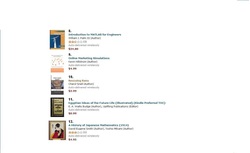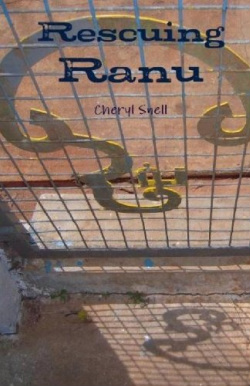A Kindle Bestseller in Mathematics Research

available in hardcover at Lulu and paperback at Amazon,
Product Details
- Paperback: 228 pages
- Publisher: Scattered Light Publications
- Language: English
- ISBN-10: 144213254X
- ISBN-13: 978-1442132542
-
Product Dimensions:
8.5 x 5.5 x 0.6 inches
- Shipping Weight: 14.6 ounces
- Trailer:
Cast of Characters
* Nela: abstract thinker turned altruist for the love of a child
* Jackson: altruist on a broader scale, he loves Nela, understands her
need to work, and to do what she thinks is right for her child; he
reserves the same rights for himself, and therein lies the stalemate
* Ranu: an orphan who changes the lives of the lovers
Memorable Quotes
* “How many cousins are worth one brother?”
spoken by Nela, explaining Hamilton's Rule to Ashoke just before he betrays her.
Setting & Important Places
* Kerala, India; London, England
Organizations
* Engineers Without Borders:
First Sentence
*As long as the man kept his sunglasses on, Nela could assume he was asleep.
Main Themes & Symbolism
* altruism: If two brothers and seven cousins were drowning, who would
you save? Hamilton's Rule specifies the conditions under which
reproductive altruism evolves: r × B > C where B is the benefit (in
number of offspring equivalents) gained by the recipient of the
altruism, C is the cost (in number of offspring equivalents) suffered by
the donor.R is the degree of relatedness. So, how related must Nela and
Ranu, or Nela and Jackson be, in order for one to rescue the other?
* the mathematics of collectives: Nela studies this subject, and Jackson
helps her discover a new fact about pursuit and cohesion in birds'
flocking behavior --- each bird only follows the bird in front of it,
although they appear to be engaged in a complicated group choreography.
In the novel, who follows who -or what- is a central metaphor.
Inspiration
*One Sunday, my husband was reading the paper when he burst into
laughter. "What? What?" I asked. He showed me a cartoon of two brothers
and eight cousins drowning. "Well, that's macabre."
"No, that's Hamilton's Rule," he told me, "which tells us under what
conditions altruism is manifested. The man on the shore must determine
how many nephews are worth one brother." Just the scaffolding I needed
for Rescuing Ranu! It would be interesting to put my protagonist, the
headstrong mathematician Nela, in a situation where she would be forced
to go from abstract thinker to selfless guardian.
Other questions arose from that. How related do you have to be to make
the cost-benefit ratio of saving someone favorable? And what of the
relationships not based on blood? Since Nela had to undergo some kind of
transformation, what could be the catalyst for such a change? A man? A
child? Possibly. Love could soften the emotional scar tissue Nela had
built up through years of straddling two cultures. The plight of
immigrants, the lives they make elsewhere, and the families they leave
behind, raised yet another question: how much can a person stand to
lose? When confronted with dueling loyalties, which part of a divided
self goes, and what stays? Themes of sacrifice, survival, and the
mysterious alchemy of love began to take shape on the page---and
suddenly I was in business!
Discussion Questions
1. Does Nela choose her own dharma? Does Jackson? Jackson is the only
man Nela has ever met who seems completely supportive of her work, yet
Nela does not entirely trust him. Is he for real?
2. Is Nela's transformation from abstract thinker to selfless guardian
motivated by the love of the child, a sense of duty, a romantic idea of
family and home, or something else?
3. Why does Ashoke try to ruin Nela? Were you surprised by his disregard for their family tie?
4. Did you expect Jackson to trade his personal happiness with Nela for
his altruism toward society at large? Couldn't he and Nela have hammered
out a more satisfying negotiation?
5. Do you believe Jackson will eventually make his way home? After all,
Nela was able to find him in Kerala without trying very hard. One bird
follows only the one in front of it.
6. The idea of flocking is as much an underpinning of the story as the
idea of Hamilton's Rule. In what way does your community apply these
natural laws?
7. Will Nela be happy in the culture she once rejected? How does the
idea of shame factor in? In what ways is she Eastern? Western?


